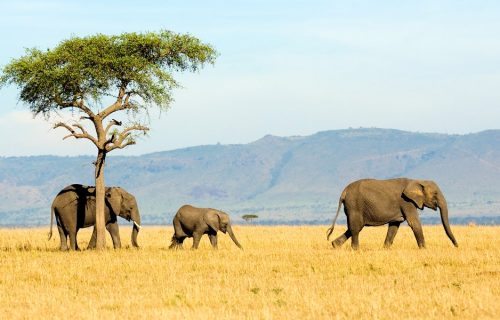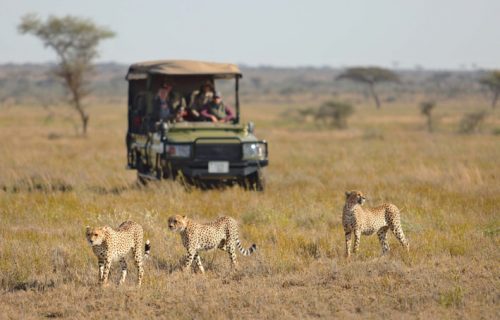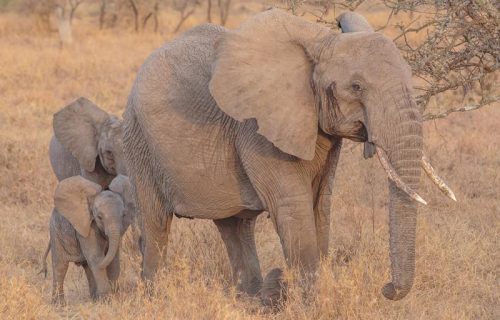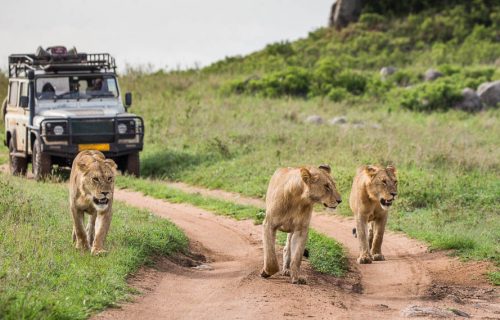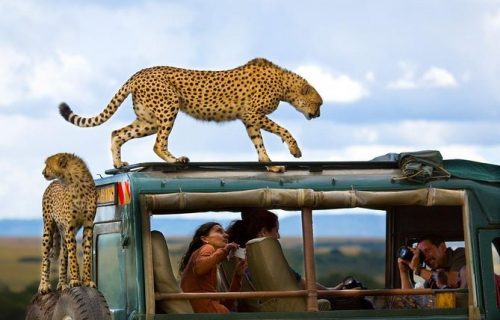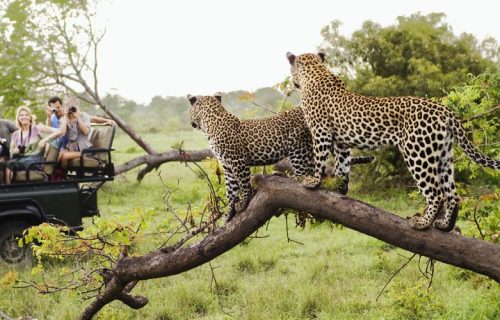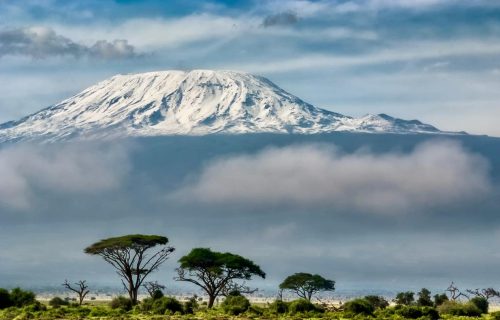Big 5 Safaris in Africa: Destinations, Best Time & Reviews
The best Big 5 Safaris in Africa, Destinations, Experiences, best time and reviews. Big 5 Safaris in Africa and The Top Big Five Safari Destinations; South Africa, Tanzania, Kenya, Botswana.
The Big Five are among the most sought-after species to see on an African safari: lion, leopard, elephant, rhino, and Cape buffalo. While some are common, others, like rhinos, are becoming fewer in number and frequently require local knowledge to find (along with a pinch of good luck).
Only a few places in Africa give the opportunity to view all five animals in one trip, and each one offers a distinctive safari experience. Our safari experts go over your options and the best approaches to seeing the Big Five while on safari.
Africa’s Big Five Animals: What Are They?
Big Five Safaris Packages
You can customize any of our suggested itineraries to fit your unique interests. These carefully chosen ideas will provide you with some inspiration, but only use them as a starting point, as your individual vacation will be specially designed for you.
4 Days Serengeti Safari and Gorilla Trekking in Rwanda is a luxury Gorilla trekking & the Great Migration Combined. 4 Days Serengeti Safari and Gorilla Trek Safari.
The 5 Days Serengeti Safari and Gorilla Trekking in Uganda offers a combination of Gorilla trekking in Bwindi National Park and the Great Migration Adventures in Serengeti National Park.
8 Days Tanzania Safari and Zanzibar Beach holiday is a luxury Tanzania Safari and Zanzibar Beach package that allows you to enjoy a lifetime adventure in the most famous.
This 8 Days Wildebeest Migration and Gorilla Trekking Safari Package will grant you an opportunity to explore Kenya, Tanzania, and Rwanda.
The Top Big Five Safari Destinations
Greater Kruger in South Africa for your top Big 5 safaris
Due to its size, the Greater Kruger National Park can maintain a large variety of wildlife. 500-strong buffalo herds and lion prides sleeping under mopane trees may be seen. Additionally, since these areas have been in place for a while, the wildlife has become accustomed to seeing cars. I’ve been on wildlife drives where a leopard approached us as if we were invisible and came within a few steps. Sabi Sands Game Reserve, one of the oldest private reserves, is well recognized for its leopard sightings. You have a better chance of seeing them up close and when they transition into hunting mode at night in reserves like these because you can drive off-road and during those times.
This region of South Africa has become a bastion for rhinos and is highly protected. On bush walks, you might run into them; your guide will be experienced at spotting their telltale signals and hunting for footprints. Because they graze on wide-open plains and are typically more docile than their shyer relatives, who stick to thicker thickets, white rhino are simpler to detect than black rhino. On bush walks here, I’ve seen all five of the Big Five, but when I explore on foot, I tend to pay more attention to the smaller animals like insects, birds, and reptiles, as well as the local plant life.
The Big Five might start out as just a list to cross off, but it comes to mean much more when you encounter a lion, elephant, rhino, leopard or Cape Buffalo in the flesh.
Masai Mara in Kenya for your Best Big 5 Safaris
The Masai Mara has a variety of habitats that are suitable for a diverse range of species, including acacia trees that provide shade for leopard, lion, and cheetah, open savannah for grazing buffalo, wildebeest, zebra, and antelope, and waterholes frequented by herds of elephant. All of the Big Five can be seen, but the lion sightings in this area are particularly noteworthy. Although numbers are dropping as a result of pressures on the land, the reserve is home to one of the highest concentrations of lions on the continent. My guide would point out each animal in the pride we saw while out on game drives. I learned about the hierarchy, the various personalities, and the rationale behind the lions’ actions. Their roars frequently resound across the plains at night.
In the main reserve, your options are limited to game drives, but if you stay on one of the neighboring Maasai-owned private conservancies, you can go on bush walks. You will still track the creatures, looking for prints and droppings left in their trail, even though these don’t necessarily focus on viewing the Big Five.
10 Days Luxury Kenya and Tanzania safari, you will visit Amboseli, Lake Naivasha, Lake Nakuru, and Maasai Mara National Reserve.
On this 14 Days Kenya and Tanzania Photo Safari epic journey, explore some of the finest national parks in East Africa.
9 Days Gorilla Trek and Masai Mara Safari in Rwanda and Kenya. A Customized Safari in Rwanda and Kenya best for Gorilla Trekking and Wildebeest Adventure.
6 Days Great Wildebeest Migration Safari in Masai Mara National Reserve is ultimately your best opportunity to see the top wildlife viewing places in Kenya.
My guide stopped me and motioned for me to listen as I was about to come close to some trees. There was a musky, earthy odor in the air, and I could hear twigs breaking and leaves rustling. My guide hushed, “There are elephants just in these trees.” Even though the elephant was out of sight, simply knowing that it was nearby was thrilling.
Hot-air balloon rides are available over the reserve, departing soon before dawn. By the morning of my last day, I had seen all of the Big Five, with the exception of the rhinoceros, who are endangered and notoriously hard to find. My morning was made when my guide pointed down to a black rhino. From the air, I could make out herds of elephants marching in formation and grazing wildebeest spread across the grassland.
Other wildlife highlights include the Great Migration, which brings millions of wildebeest and zebra to the Masai Mara between August and October, drawing big cats like the cheetah. I enjoy Ol Seki Hemingways Camp in the Naboisho Conservancy as a place to stay. The majority of the employees grew up close to the camp and can share their encyclopedic knowledge of the area’s fauna. Your huge canvas tent overlooks the Naboisho Valley. When to go: The Great Migration takes place throughout the dry months of July through October.
Serengeti in Tanzania for your Best Big 5 Safaris
If you have a wildlife bucket list, there’s a good chance you’ll cross it off while on a safari in the Serengeti. It’s overwhelming to think about how many creatures live on the park’s vast open plains.
While on a game drive, you’ll encounter vast herds of wildebeest (the migratory herds are year-round fixtures in the park), which draw big predators.
Elephant herds move slowly along paths that have been used by plenty of people throughout the years connecting the park’s waterholes. Buffalo can be a little more elusive, but I’ve observed lone males perched atop rocky outcrops to have a better view of the plains.
The best way to observe the Big Five is on game drives, but you can also fly over the Serengeti in a hot air balloon at dawn. You get a bird’s-eye view of the animals as well as a better understanding of exactly how large the Serengeti is.
A trip to the Serengeti could be combined with a safari in the Ngorongoro Crater. The best site in Tanzania to watch rhinos may be found in this enormous, sheer-sided crater, which has created a natural bowl packed with wildlife. On game drives, you’ll explore the grasslands and small patches of forest, crossing herds of wildebeest, zebra, and eland while keeping an eye out for the other Big Five.
Other wildlife highlights include the opportunity to see a Serengeti region that was shut down for 20 years to conduct a cheetah study. It still has a strong cheetah population, which makes for some fantastic up-close sightings.
Sayari, a tented camp in the northern Serengeti, is a good site to stay if you want to observe the Great Migration herds enter the Masai Mara. The 15 spacious canvas tents at the camp each have a private veranda that overlooks the grasslands. While soaking in the infinity pool, you can keep an eye out for passing wildlife.
When to go: Between July and October, during the dry season, to observe herds of the Great Migration traveling through the northern Serengeti and animals gathering around waterholes.
An unforgettable 8-day Uganda and Kenya safari that includes visits to Hell’s Gate, Lake Nakuru, and the Maasai Mara wildlife safari. Lake Nakuru: Marvel at the magnificent water birds.
This classical 20 Days Gorillas and Kilimanjaro Trekking (Uganda & Tanzania Safari) offer an unbeatable safari experience in each of the two East African countries.
Do you dream of a safari to Uganda or a special encounter with a mountain gorilla? 18 Days Uganda Safari – The Pearl of Africa is the dream trip of a lifetime.
When is the Best Time to See the Big 5
In most of Africa, the months of July through October are prime safari months. This occurs throughout the dry, chilly winter season on the continent. Several factors make certain periods more favorable for finding them:
- Without rain, grass and trees dry out and thin down, making it much easier to spot a rhino or buffalo than in the summer’s lengthy, dense growth. Leopards, which spend a lot of time in trees, will be easier to identify in the winter since there will be fewer leaves on the trees.
- Animals are concentrated towards the few remaining large lakes and rivers since the lack of rain has dried up smaller water channels such as ponds, streams, puddles, and watering holes. Most animals need to drink every day to stay close to the remaining water and not go too far away. Herds of buffalo and elephant, in particular, frequently travel to rivers that provide abundant life, such as the Chobe on the boundary between Namibia and Botswana.

